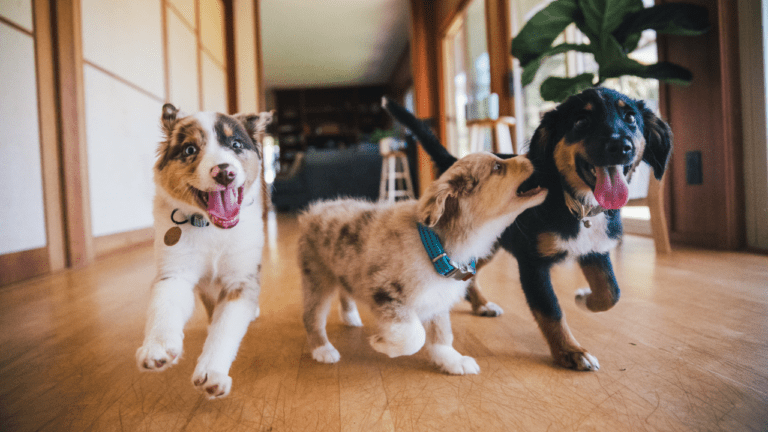Having a pet is a commitment. Most people misunderstand the most common pet emergencies and don’t call for help until it’s too late. Understanding and keeping a list of the most common emergencies that require a veterinarian’s attention will help keep a pet healthy for a long time.
1. Severe Bleeding
This is the number one emergency because too many people believe an animal’s first aid can be done at home. If bleeding is severe or lasts more than five minutes, it must be checked by a vet. The fur could be hiding a bigger problem, or the animal might need stitches to heal without infection. The cut could be deeper than it appears, or there could be internal bleeding that needs surgery.
2. Choking and Difficulty Breathing
As with humans, it’s never a good idea to “wait and see” when an animal cannot breathe. Never try to clear the airway, and learn animal CPR to keep the animal safe. Take the vet to emergency care, even if CPR helps the animal breathe again, to make sure the animal is safe. A vet is the best trained person to make sure the animal does not have internal damage that caused the breathing issues.
3. Blood from Extremities
If there is blood in sputum, vomit, excrement, nose, ears, eyes, or mouth, it’s important to find out why. Perhaps the animal was injured while out of your sight, and needs emergency procedures to live. Blood should never be taken lightly. Seek emergency care immediately if blood is found coming from an animal. There could be unseen internal injuries.
4. Inability to Toilet
If the animal has pain in urination or defecation, or can do neither, it’s important to find out why. The animal could have an issue larger than you can handle, and may need a doctor’s care. Animals often do not express pain, so an ongoing issue can progress to a life threatening problem without your knowledge.
5. Injury to Eyes
An animal’s eyes are structured differently than a human’s eyes. If the eye is injured, there could be internal damage to structures close to the brain. Asking a vet for help will save your pet further harm.
6. Eating Poison
Many things that are fine for humans are toxic for animals. Items such as antifreeze, multivitamins, chocolate, pest poison, and more are very dangerous. They are also items an animal will ingest willingly. Learn what items are poisonous to your pet and call a vet emergency service immediately if you suspect your animal has ingested any poisonous substance.
7. Seizures
If an animal seizes, vet attention is required immediately. Staggering also falls under this category. These activities indicate a problem with the brain, and the animal needs immediate help. A vet can assess the situation, and might require more tests to find out how to best help the animal.
8. Lameness and Broken Bones
It’s never a good idea to allow an animal to “heal” when he or she displays leg issues. Allowing this to happen will cause the animal unnecessary pain later in life. Avoid these issues by taking the animal to the vet and help him or her live a longer, healthier, happier life.
9. Pain and Anxiety
As stated above, pets will not tell their humans when there is pain. If an animal is exhibiting signs of pain, it has progressed to a severe state and the animal must see a vet right away. Another method of expressing pain or illness is anxiety. If your normally happy dog suddenly snaps at your hand or does not welcome visitors, there might be a physical issue. Call a vet right away to have the animal evaluated to check for any possible pain. If you can pinpoint the area of the pain, it will help the vet’s diagnosis. Note the animal’s change in behavior and anxiety activities as well, as these notes will also help the vet.
10. Heat Stroke
As more stories of animals left in cars surface, so does the awareness of heat stroke. If an animal is suffering from heat stroke, he or she must see a vet immediately. Some signs of heat stroke are:
- panting excessively
- dark or bright red gums
- dry tongue
- staggering, stupor or seizures
- bloody diarrhea and/or vomiting
11. Severe Vomiting/Diarrhea
Many people like to wait these out, but either of these items in their severity will cause dehydration and death quickly. It’s important to find out why the animal is having this reaction. Take the animal to the vet, and try to remember what the animal has eaten. Consider any poisons the animal may have encountered using the poison list mentioned above. The information you can provide about your pet’s most recent activities will help the vet find out what’s wrong.
12. Refusal to Drink
An animal will drink consistently. If the animal has had nothing to drink in the past 24 hours, despite available water, take the animal to the vet. It’s important to understand your animal and keep the water dish clean, but even if the dish is dirty, an animal will eventually drink from it. Any refusal to do so over 24 hours is an indication of an emergency situation.
13. Unconsciousness
This item seems obvious, but some pet owners may think their animal is simply sleeping. If the animal cannot be roused from a sleep, contact a vet right away. The animal may have passed out. The vet will need to evaluate the animal to find out what could be happening to make the animal lose consciousness.


